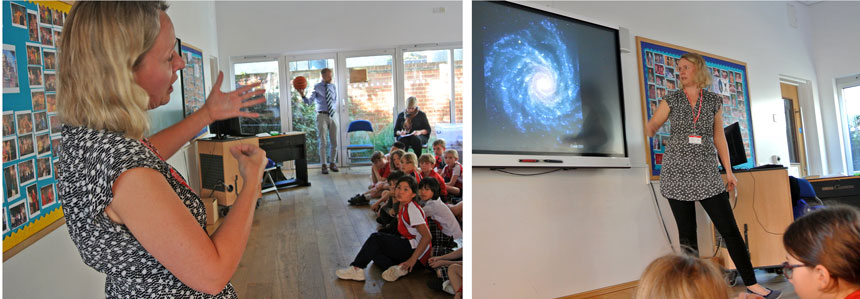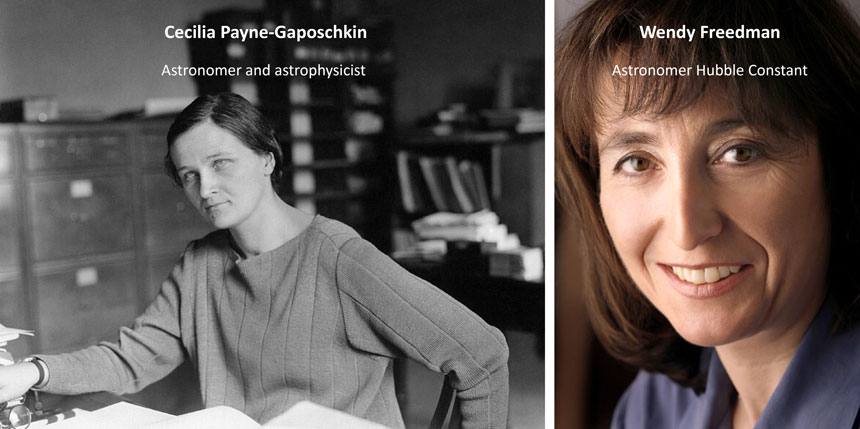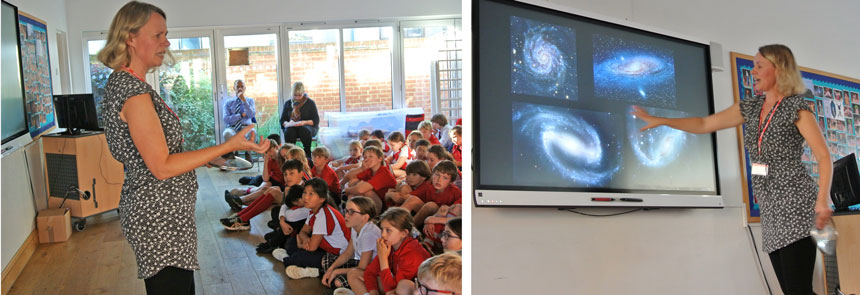We welcomed astrophysicist, Professor Jo Dunkley, to St John's to give a talk about the origins and evolution of our universe to our Forms 3 and 4 as part of our Thursday Afternoon Enrichment Programme. Jo Dunkley is a professor of physics and astrophysical sciences who shared her delight in the wonders of the universe with the children.
Professor Dunkley debunked any common misperceptions that the universe is too hard to understand or too big to fathom by breaking this down by starting with the familiar - the moon, our sun and our home in the solar system and working further out to the far reaches of the universe. She used analogies to help make these often vast concepts more accessible for the children.

Her talk began with the concept that the night sky is an endless source of wonder and mystery and that for thousands of years it has been at the heart of scientific and philosophical inquiry from the first star catalogues etched into ancient Mesopotamian clay tablets to the gigantic telescopes constructed in Chile's Atacama Desert today.
The children were encouraged to ponder questions such as, 'Will our sun explode one day?', 'Do other stars have solar systems?', 'How old is the universe?' and 'Will the Milky Way be around forever?'. Professor Dunkley also tackled ideas including whether you can see back in time, if you can weight objects in space, how you can design your own telescope and how you can tell how far away things are.
We thought about massive ideas such as what happened before the Big Bang, is there alien life on other planets and what happens inside a Black Hole. It was fascinating. (Form 4 pupil)
As she addressed these huge concepts, Professor Dunkley unfurled the history of humankind's journey to understand and make sense of the structure of the cosmos, revealing stories of astronomy pioneers including British-American astronomer and astrophysicist, Cecilia Payne-Gaposchkin, who discovered in 1925 that the Sun and the other stars are composed almost entirely of hydrogen and helium, the two lightest elements.

Her groundbreaking conclusion was initially rejected because it contradicted the science at the time which held that no significant elemental differences distinguished the Sun and Earth but her theory was proved correct and her work on the nature of variable stars was foundational to modern astrophysics.
Professor Dunkley used the 'raisin bread dough' model to explain about the expanding universe. As the bread bakes, the raisins in the bread (like the galaxies in our universe) don't change size but the dough (the space between galaxies) keeps getting bigger as the loaf rises.

The pupils found out that the Hubble constant is one of the most important numbers in cosmology because it tells us how fast the universe is expanding, which can be used to determine the age of the universe and its history - getting its name from Edwin Hubble who was the first to calculate the constant from his measurements of stars in 1929.
As the talk reached its conclusion, the children considered if there is alien life on other planets, what happened before the Big Bang and what happens inside a Black Hole to end an insightful and highly educational and inspirational talk.
I found out that Professor Wendy Freedman led a team of 30 astronomers who carried out the Hubble Key Project and that they discovered that the universe is approximately 13.7 billion years old. (Form 3 pupil)